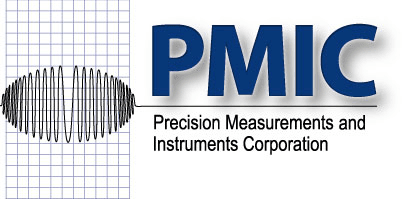Testing Instruments
Research test systems are available for purchase. These instruments are designed to customer-specified parameters based on expectations for specific customer internal uses. PMIC builds these instruments for those customers with high-volume repeat testing, and for purposes of scientific advancement, such as the needs of dedicated research labs and universities.
INSTRUMENT INQUIRIES are responded to with initial information and Rough-Order-of-Magnitude (ROM) pricing. Upon verification of customer interest, PMIC will require additional information to design the test system, including:
- Electrical and power source requirements
- Software compatibility (see SOFTWARE below)
- Cooling water
- Temperature capability requirements, including liquid nitrogen connections or high-temperature components
- Environment: Vacuum, humidity, etc.
- Specific specimen dimension needs
Instrument designs are based on existing PMIC instruments. After a consulting phase, PMIC will communicate feasibility, limitations, terms and conditions, and estimated cost.
SOFTWARE
PMIC measurement systems are computer controlled with minimal operator interaction required. The software is based on LabVIEW (National Instruments) and features intuitive setup screens and full-screen real-time reporting. Testing at multiple temperature settings is easily accomplished through automated temperature control. Other software requirements may be necessary based on special requests.
MODEL “LVDT-200”
Quartz Dilatometer
The PMIC LVDT-200 uses quartz rods and linear variable differential transformers (LVDTs) to measure real-time thermal expansion/contraction for maximum resolution and accuracy. Minute changes are recorded to offer high resolution down to 0.1 µm/(m·K). The system arrangement uniquely allows a wide range of specimen size and shapes along with multiple specimens being tested at the same time. Standard models can test thin films, plates, sandwich structures, circuit boards, IC chips, and specimens up to 20 mm long.
INST Model LVDT
| Model LVDT-200 | Options |
|---|---|
| Resolution | 10 µm/(m·K) |
| Base Temperature Range | 123 K to 423 K (-150 °C to 150 °C) |
| Specimen Size | Simple to Complex |
MODEL “MI-900”
Michelson Laser Interferometer
The PMIC MI-900 measures real-time thermal expansion and contraction. Each shift in the fringe pattern corresponds to a change in specimen length of one-half the laser wavelength; 316 nm for a He-Ne laser in vacuum.
Precision optics, photo detectors, and interpolation techniques allow nanometer resolution. This technique uniquely allows a wide range of specimen size and shape. Thin films, plates, sandwich structures, and tubes can be tested. Multi-directional strains can be determined simultaneously, e.g., for composite components or structures.
INST Model MI
| Model MI-900 | Options |
|---|---|
| Resolution | 0.001 µm/(m·K) |
| Base Temperature Range | 123 K to 423 K (-150 °C to 150 °C) |
| Specimen Size | Simple to Complex |
MODEL “TK-500”
Guarded-Longitudinal Heat Flow System
PMIC’s TK-500 model instrument is ideal for evaluating materials in the moderate to high thermal conductivity range. It is based on ASTM E1225 design and provides real-time thermal conductivity versus temperature recording.
INST Model TK-E
| Model TK-500 System | Options |
|---|---|
| Thermal Conductivity Range | 0.2 W/(m∙K) to 250 W/(m∙K) |
| Temperature Range | 45 K to 923 K (-228 °C to 650 °C) |
| Specimen Size | Simple to Complex |
MODEL “TK-700”
Guarded-Hot-Plate System
PMIC’s TK-700 model instrument is ideal for evaluating materials in the low thermal conductivity range. It is based on ASTM C177 design and provides real-time thermal conductivity versus temperature recording.
INST Model TK-C
| Model TK-700 System | Options |
|---|---|
| Thermal Conductivity Range | 0.01 W/(m∙K) to 0.2 W/(m∙K) |
| Temperature Range Limits | 108 K to 673 K (-165 °C to 400 °C) |
| Specimen Size | 152 mm (6.0”) or larger square specimens, thickness determined by ASTM C177 |
MODEL “CME-100”
Many materials expand, contract, change mass, and undergo internal stress changes under varying conditions of humidity due to moisture absorption and diffusion. This is often a significant design consideration and usually requires weeks of testing in a controlled lab environment to determine the coefficient of moisture expansion (CME).
The PMIC CME-100 system uses linear variable differential transducers (LVDT) for displacement measurements and microgram mass variation simultaneously. The user interface allows real-time expansion/contraction recording, running executable code for ease of use in a user-friendly environment, with maximum resolution and accuracy.
The PMIC CME-100 system accepts composite laminates, ceramics, resins, films, strings, and a variety of other materials and can be utilized to test moisture absorption and hygrothermal properties. Also, with this system, materials can be studied to understand boundary effects, the impact of moisture cycling, and material damage.
INST Model CME
| Model CME-100 System | Options |
|---|---|
| Moisture Range | 0.0 % RH to 98 % RH |
| Temperature Range | 273 K to 367 K (0 °C to 94 °C) |
| Specimen Size | Customized Size |
Other test systems have been designed on a per-request basis to target specific material properties such as thermal strain, creep in compression, refractoriness under load, etc. Such systems are intended for research only and require extensive design and qualification time, as well as customer capability to support and operate the instrument with appropriate competencies.




